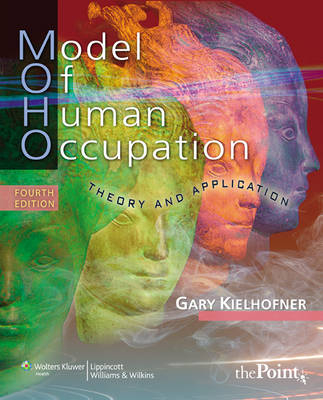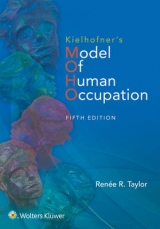
Model of Human Occupation
Lippincott Williams and Wilkins (Verlag)
978-0-7817-6996-9 (ISBN)
- Titel erscheint in neuer Auflage
- Artikel merken
Model of Human Occupation, Fourth Edition offers a complete and current presentation of the most widely used model in occupational therapy, and delivers the latest in MOHO theory, research, and application to practice. This authoritative text explores what motivates individuals, how they select occupations and establish everyday routines, how environment influences occupational behavior, and more.
NEW TO THIS EDITION:
Case Vignettes that illustrate key concepts that students need to know
Case Studies that help students apply the model to practice
Chapter on evidence based practice (ch. 25)
Chapter on World Health Organization and AOTA practice framework and language links the MOHO model to two widely used frameworks (ch. 27)
Photographs of real patients help bring the concepts and cases to life
Chapter 1: Introduction to the Model of Human Occupation
Section 1: Explaining Human Occupation
Chapter 2: The Basic Concepts of Human Occupation
Chapter 3: The Dynamics of Human Occupation
Chapter 4: Volition
Chapter 5: Habituation: Patterns of Daily Occupation
Chapter 6: Performance capacity and lived body
Chapter 7: The Environment and Human Occupation
Chapter 8: Dimensions of Doing
Chapter 9: Crafting Occupational Life
Chapter 10: Doing and Becoming: Occupational Change and Development
Section 2 Applying MOHO: The Therapy Process and Therapeutic Reasoning
Chapter 11: Therapeutic Reasoning: Planning,Implementing and Evaluating the Outcomes of Therapy
Chapter 12:Assessment: Choosing and Using Structured and Unstructured Means of Gathering Information
Chapter 13:Occupation Engagement: How Clients Achieve Change
Chapter 14:Therapeutic Strategies for Enabling Clients
Section 3: Assessments: Structured methods for Gathering Client Information
Chapter 15: Observational Assessments
Chapter 16:Self-Reports: Eliciting Client's Perspectives
Chapter 17: Talking With Clients: Assessments That Collect Information
Chapter 18:Assessments Combining Methods of Information Gathering
Section 4: Case Illustrations
Chapter 19:Recrafting Occupation Narratives
Chapter 20:Applying MOHO to Clients Who Are Cognitively Impaired
Chapter 22:Enabling Clients to Reconstruct Their Occupational Lives in Long-Term Settings
Section 5: Resources for Applying and Developing MOHO
Chapter 23:Communication and Documentation
Chapter 24:Program Development
Chapter 25:Evidence for Practice from the Model of Human Occupation
Chapter 26:Research: Investigating MOHO
Chapter 27:The Model of Human Occupation, the ICF, and the Occupational Therapy Practice Framework: Connections to Support Best Practice Around the World .
Appendix A: Bibliography
Appendix B: Introduction to the MOHO Clearinghouse and Web Site
| Erscheint lt. Verlag | 4.9.2007 |
|---|---|
| Verlagsort | Philadelphia |
| Sprache | englisch |
| Maße | 187 x 235 mm |
| Gewicht | 1066 g |
| Themenwelt | Medizin / Pharmazie ► Physiotherapie / Ergotherapie ► Ergotherapie |
| ISBN-10 | 0-7817-6996-5 / 0781769965 |
| ISBN-13 | 978-0-7817-6996-9 / 9780781769969 |
| Zustand | Neuware |
| Informationen gemäß Produktsicherheitsverordnung (GPSR) | |
| Haben Sie eine Frage zum Produkt? |
aus dem Bereich



